- [Shajiraku]Homepage
- Experience
- A talk about “Junihitoe (twelve-layered kimono ...
- Experience
Selection - Location
Selection - To
Provisional
Reservation
Request
感Feeling
A talk about “Junihitoe (twelve-layered kimono considered the supreme costume for a women)” and “Emondo”
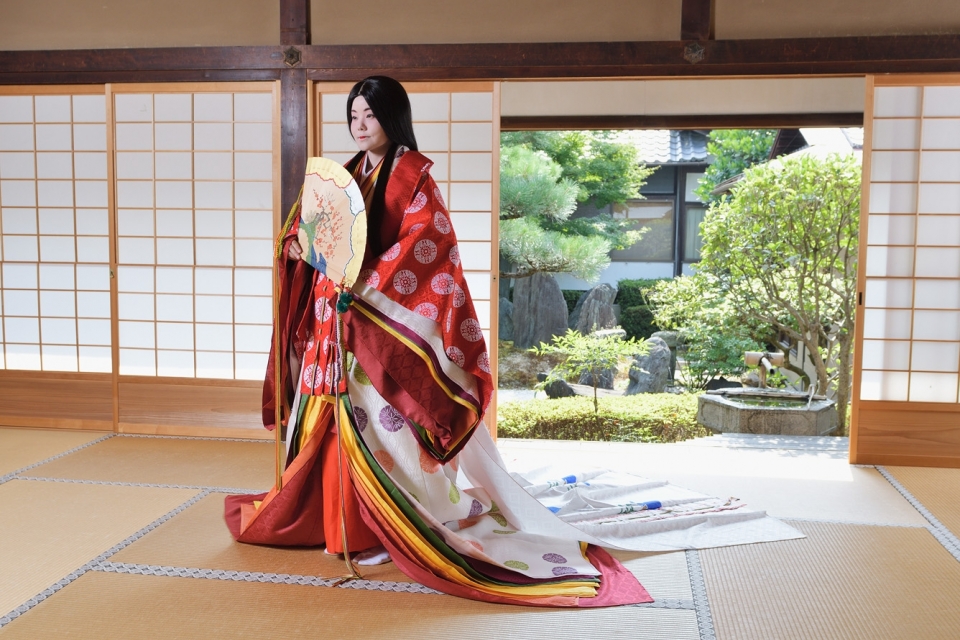
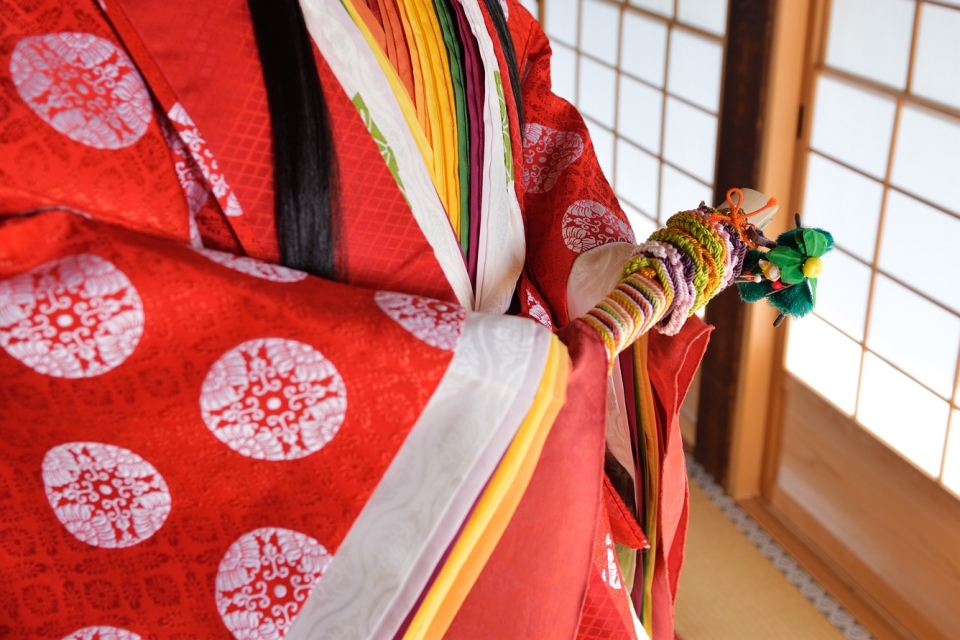
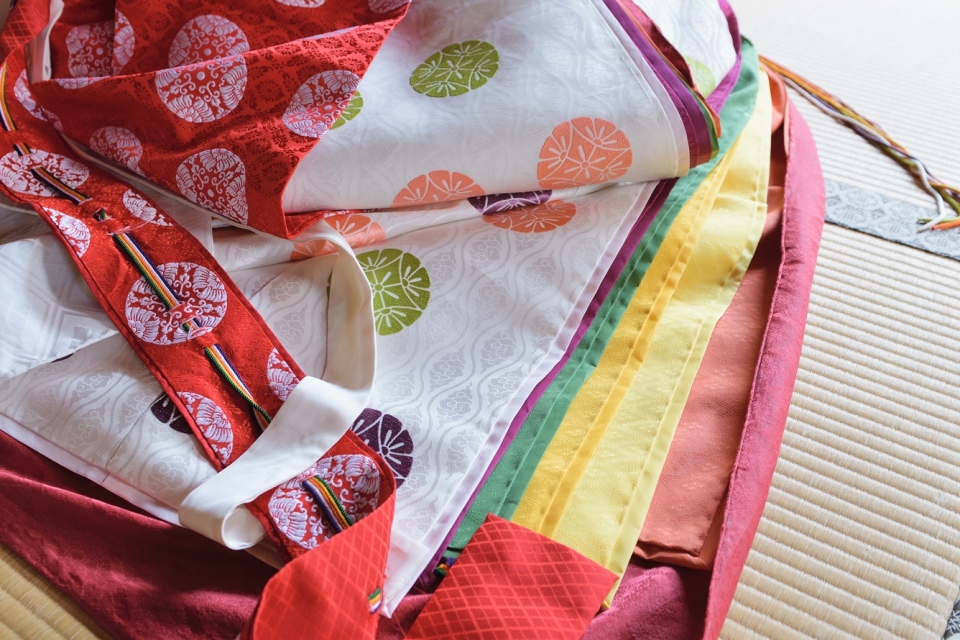
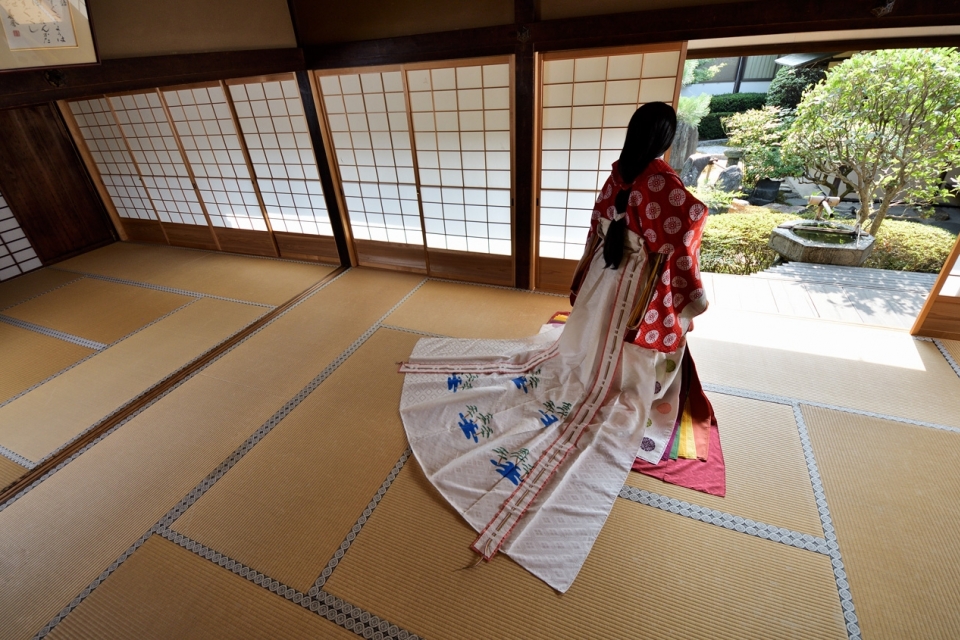
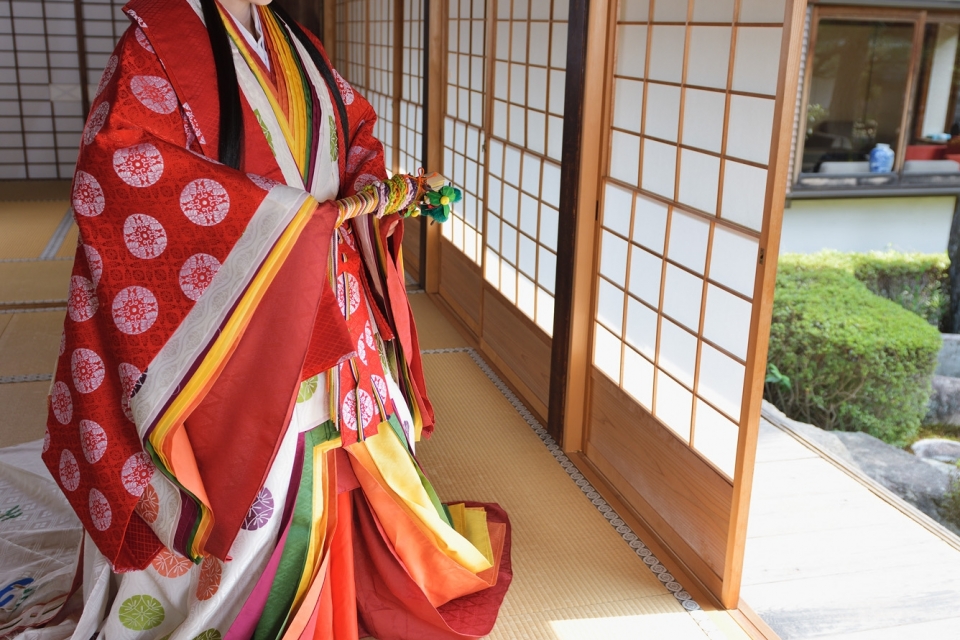
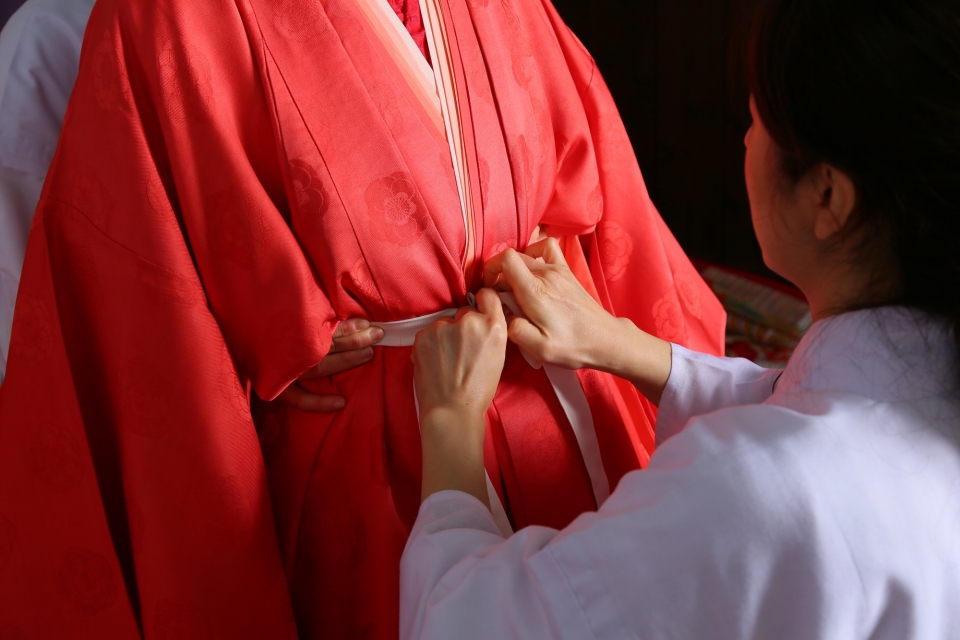
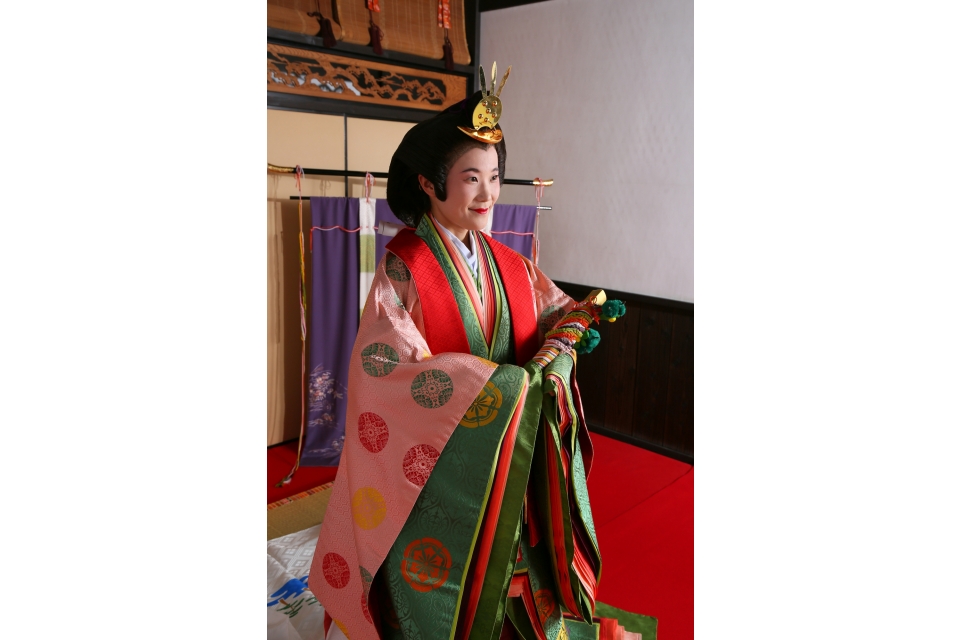
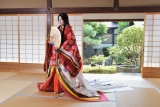
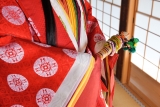
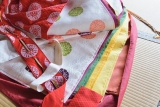
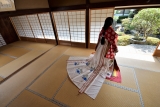

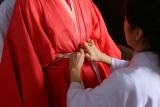
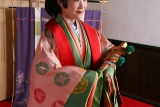
Junihitoe is the formal costumes for officials in Heian period, and are the court costumes that have existed for about a thousand years.
The name “junihitoe” is a popular name created after ages and the original name is Karaginumo-shozoku, Hare-shozoku, Mononogu-shozoku and Nyobo-shozoku.
Composition of Junihitoe is different from generation to generation. For the current one, women put on Shirokosode (White short sleeve dress), Nagabakama (formal long skirt), Hosoobi (thin sash), Hitoe (unlined kimono), Itsutsuginu (5 dresses), Uchiginu (Shiny clothe under Uwagi), Uwagi (main dress top of all clothes), Tougi and Mo (lower garment) on Hadagoromo (underwear)with their hair tied up and decorated with Kushi, Saishi and Hiradai. They are also meant to hold Tatougami (a kind of Japanese paper, Washi) and Hiougi (fan made of Japanese cypress) in their hands.
As Sadoh (the world of tea ceremony) and Kadoh (the world of flower arrangement) exist, there is the world of dressing of Kimono called “Emondoh”.
As the nobles in mid-late Heian period favored the beauty of glamorous curves, they wore loose fitting costume which was called “Naeshozoku”.
People needed a special technique of dressing to keep having a dignified manner since Kimono is uncomfortable to wear due of its thickness and hardness of cloth. This is what “Emondo” is.
Today, Junihitoe is still wore at wedding ceremonies and coronations and everyone hopes to wear them at least once in a life. Please have an experience of “a precious time” with comfortable and beautiful “Emondo” techniques.
The name “junihitoe” is a popular name created after ages and the original name is Karaginumo-shozoku, Hare-shozoku, Mononogu-shozoku and Nyobo-shozoku.
Composition of Junihitoe is different from generation to generation. For the current one, women put on Shirokosode (White short sleeve dress), Nagabakama (formal long skirt), Hosoobi (thin sash), Hitoe (unlined kimono), Itsutsuginu (5 dresses), Uchiginu (Shiny clothe under Uwagi), Uwagi (main dress top of all clothes), Tougi and Mo (lower garment) on Hadagoromo (underwear)with their hair tied up and decorated with Kushi, Saishi and Hiradai. They are also meant to hold Tatougami (a kind of Japanese paper, Washi) and Hiougi (fan made of Japanese cypress) in their hands.
As Sadoh (the world of tea ceremony) and Kadoh (the world of flower arrangement) exist, there is the world of dressing of Kimono called “Emondoh”.
As the nobles in mid-late Heian period favored the beauty of glamorous curves, they wore loose fitting costume which was called “Naeshozoku”.
People needed a special technique of dressing to keep having a dignified manner since Kimono is uncomfortable to wear due of its thickness and hardness of cloth. This is what “Emondo” is.
Today, Junihitoe is still wore at wedding ceremonies and coronations and everyone hopes to wear them at least once in a life. Please have an experience of “a precious time” with comfortable and beautiful “Emondo” techniques.





